




 [Radtour Nord2]
[Radtour Nord2]
Dorsten's History - Station 24: Colliery Settlement

"The history of the most beautiful and largest preserved miners' settlement in the Ruhr area must remain alive in order to be able to shape the future," said the pastor Dr. Hans-Udo Schneider, welcoming the history board, from which he drew further impetus for the Association for Mining and Industry, which was founded in 2003 and social history promises.
The Hervester colliery settlement was laid out in 1912 between today's Halterner Straße and the Lippe: the Catholic area with the Josefschule and Josefkirche was built on the east side, and the Protestant area with the Augustaschule and today's Kreuzkirche on the west side.
Today the mines are closed, the work is no longer on the doorstep. "The new use of the colliery area and the creation of sustainable jobs are a major challenge," Lütkenhorst admits that the structural change has not yet taken effect as desired. Nevertheless, one should not badmouth the district of Hervest: The settlement has its very own thanks to renovation and modernization developed charm.
The mayor thanked the Dorsten Hanse Lions Club and Deutsche Steinkohle AG for financing and organizing the 24th history station, and the history working group of the Petrinum grammar school for research and editing, this time thanks to Barbara Dirks, Imke Krause, Katharina Vukovic and Christina Dirks.
|
|
1910 |
_ |
A settlement for the miners of the "Baldur" colliery is being built to the east of Borkener Straße in Holsterhausen. | |
|
The Titanic collides with an iceberg on its maiden voyage and sinks with over 1,500 people. The wreck is found in 1985.
| _ |
1912 |
_ |
Between today's Halterner Strasse and the Lippe, in the immediate vicinity of the "Fürst Leopold" colliery, a settlement for the miners is being built, which was laid out according to the principles of the garden city movement. The integration of the new colony residents, who differ from the long-established population in terms of language, origin, profession and lifestyle, is proving difficult. |
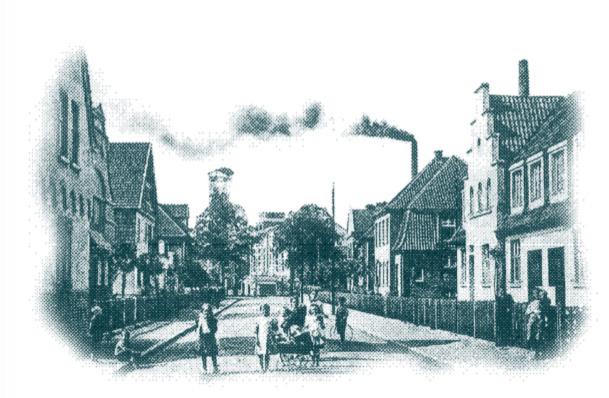 Körnerstraße (heute: Schachtstraße) in der Burgdorfkolonie (um 1930) |
1918 - 1930 |
_ |
The Catholic area (Josefschule, Josefskirche, kindergarten) is being built on the east side of the Hervester colliery settlement, while the Protestant area is on the west side (Augustaschule, today's Kreuzkirche, kindergarten). | |
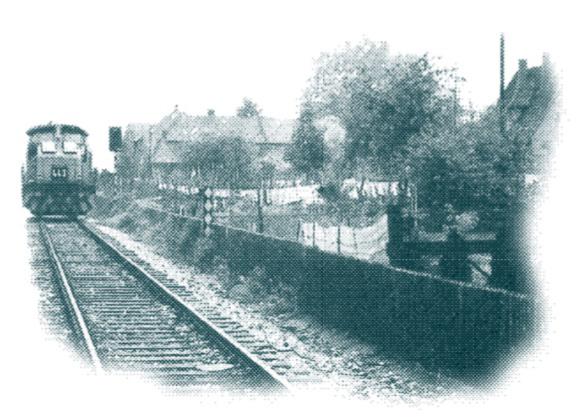 Mine railway in the Hervester settlement |
1955 |
_ |
The hard coal mines compaany "Mathias Stinnes AG" are planning to build a large pit in Wulfen. The employees (about 5,000) should be able to live in the “New Town of Wulfen”, which is designed as an independent town for about 50,000 inhabitants. | |
|
Richard Nixon is the first US President to visit China and the USSR. 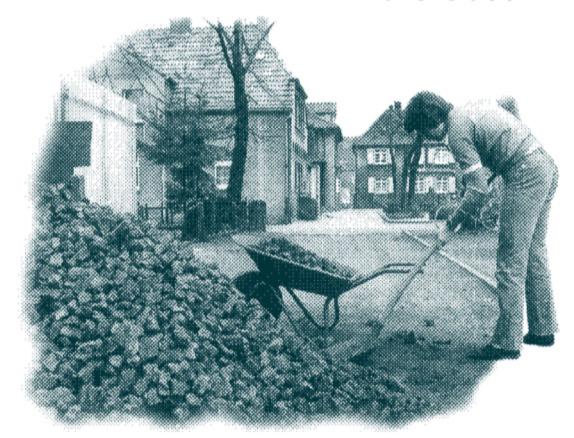 carry coal | _ |
1972 - 1973 |
_ |
A uniform modernisation and redevelopment of the miners' housing estates in Holsterhausen fails because a design statute has not been passed. |
|
|
1982 - 1983 |
_ |
After the closure of other mines and the associated transfer of workers, new housing for miners is built in Hervest (Freiheitsstraße, Schollbrockstraße, Grothuesstraße). | |
|
Die Computerfirma „Apple” bring mit dem „Macintosh” den mit Abstand leistungsfähigsten PC auf den Markt.
| _ |
1987 |
_ |
Ein Teil der Zechensiedlung Hervest zwischen Halterner Straße und Glück-Auf-Straße wird als Denkmalbereich unter Schutz gestellt. Eine Grundlage der nachfolgenden Modernisierung ist das vom Architekturbüro Ludes erarbeitete Gestaltungskonzept. |
|
|
1988 |
_ |
Johannes Rau, then Minister President of North Rhine-Westphalia, gives the speech at the inauguration of the Brunnenplatz in the redeveloped Hervest colliery estate. | |
|
|
1990 |
_ |
The City of Dorsten opens the Galerie am Brunnenplatz. | |
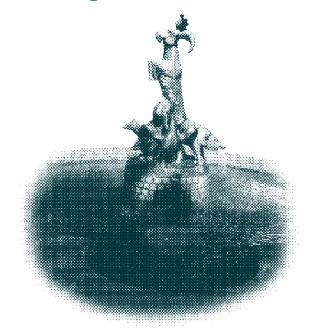 Miners' pets - sculpture at the fountain square |
2003 |
_ |
The new "Verein für Industrie-, Bergbau- und Sozialgeschichte Dorsten e.V." (Dorsten Association for Industrial, Mining and Social History) is committed to preserving the mining heritage in Dorsten after the closure of the "Fürst Leopold" mine. |
[zurück]
Daten und Fakten
Eröffnung - 08. Dezember 2005
Adresse - Brunnenplatz
Geodaten - 51°40'11.8 6°59'10.28
Opening ceremony at Brunnenplatz
On Monday evening, a new history station on the subject of the coal-mining settlement was handed over - right in the heart of the Hervest settlement, on Brunnenplatz.
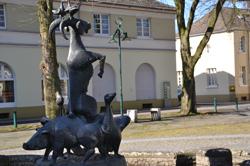
Fountain with the history station in the background
The generators of the volunteer fire brigade provided good lighting, but hummed so loudly that Mayor Lütkenhorst had to increase his phonetic volume considerably: "Next time we'll light candles," he muttered and first thanked everyone who had made the realisation of the 24th history station possible.
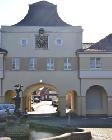
The fountain square with gateway
Life was buzzing at Brunnenplatz - the "Pütt" was just around the corner - in the immediate vicinity of the Fürst Leopold colliery, the miners of Hervest settled back then. Market days and May Day rallies were held here, children played here and the miners let their pigeons soar into the air.
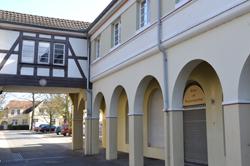
The meeting centre
The meeting centre set up at Brunnenplatz promoted dialogue among people of different nationalities, who lived together peacefully here and were warmly welcomed.
The Intercultural Women's Group also warmly welcomed the frozen guests, to whom they offered warming tea and coffee after the official act.
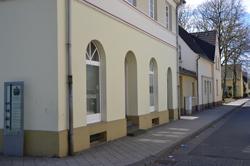
View of Compesstraße, the history plaque on the left

